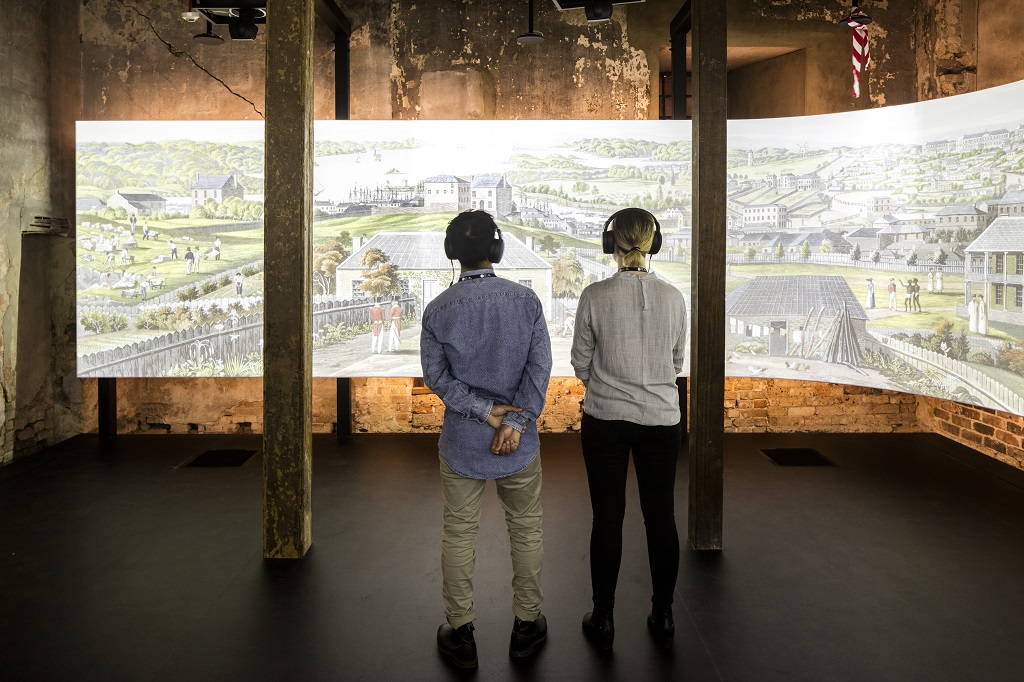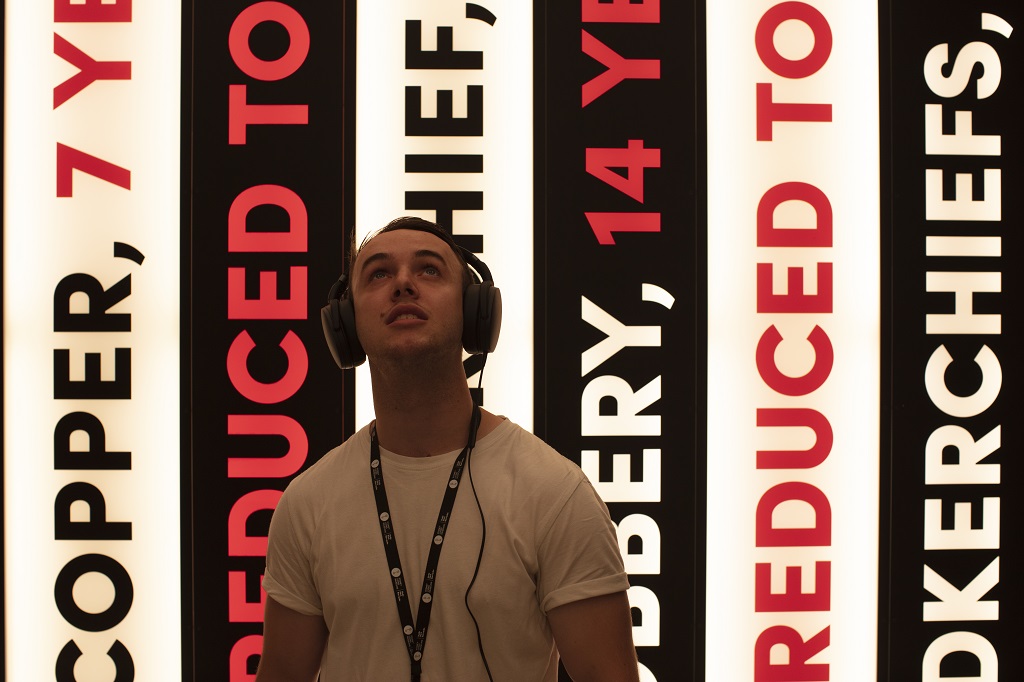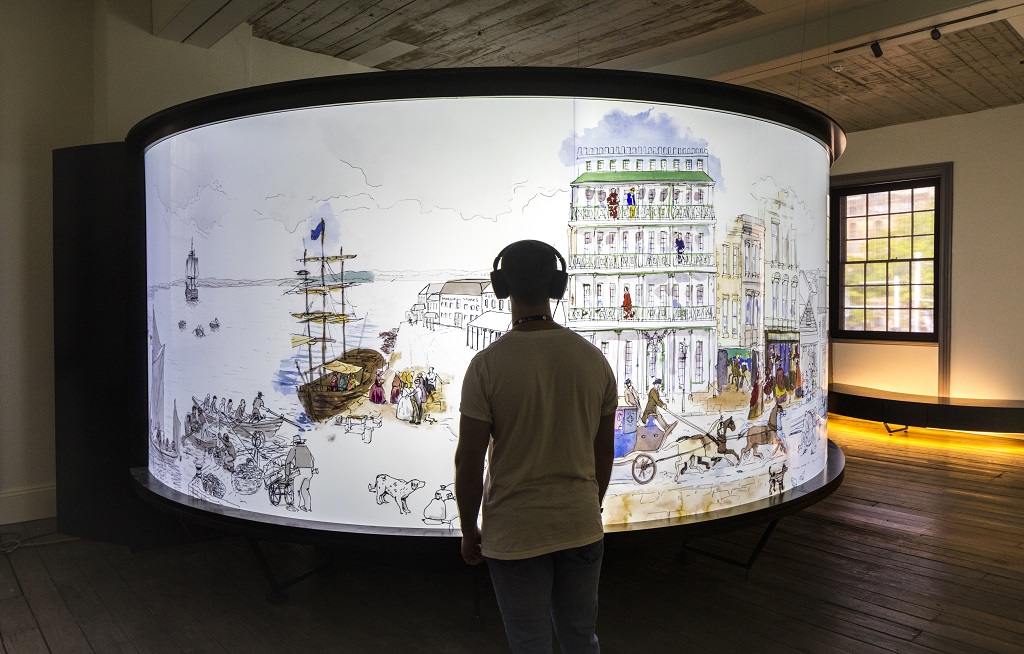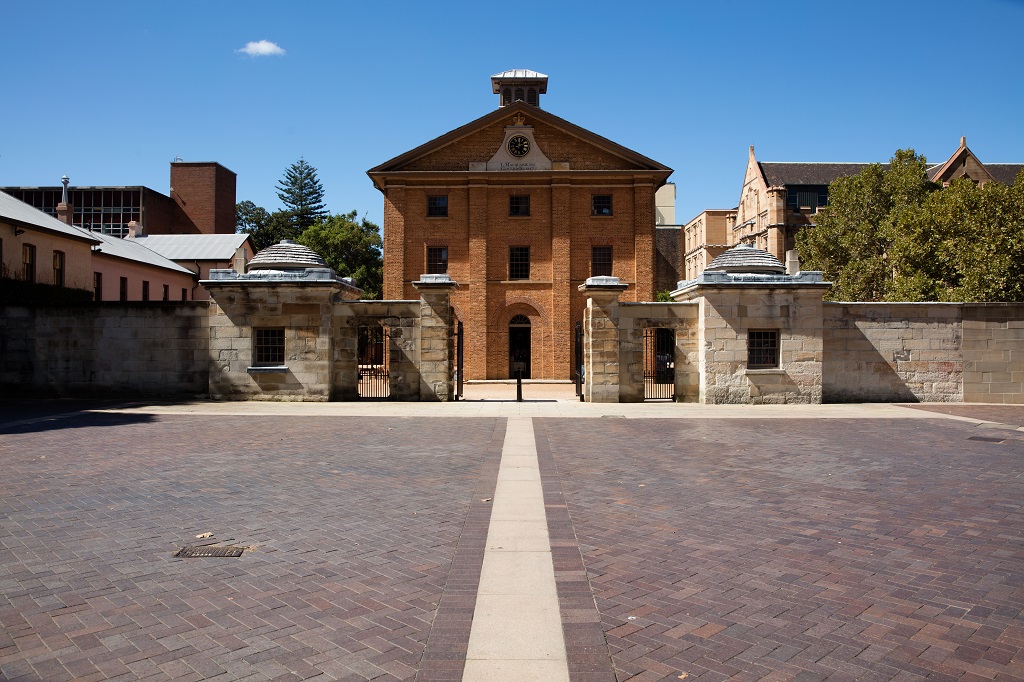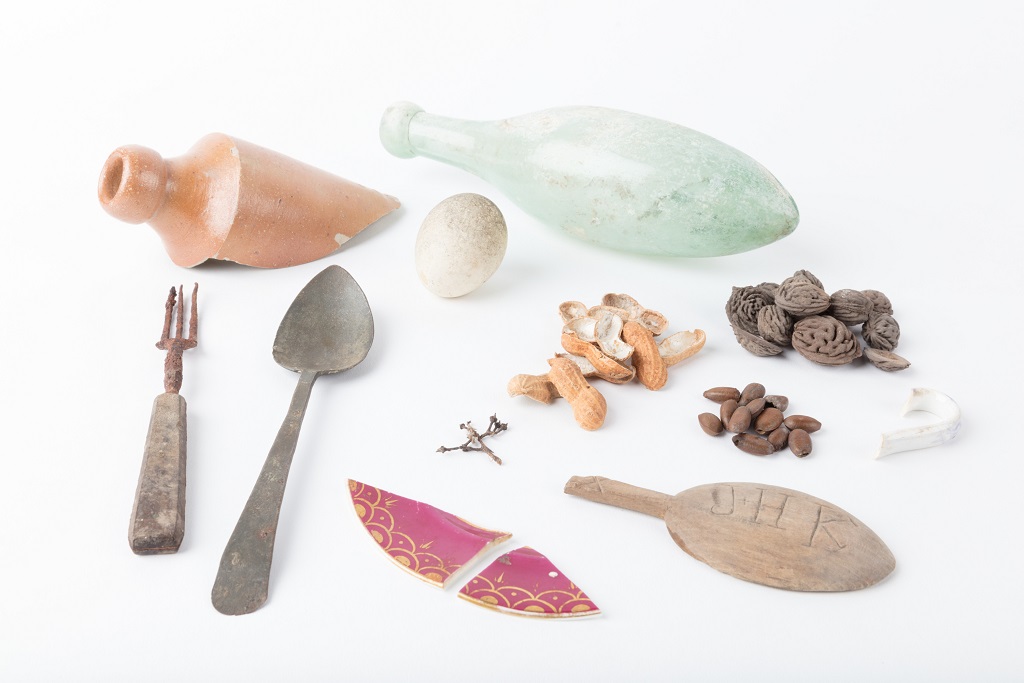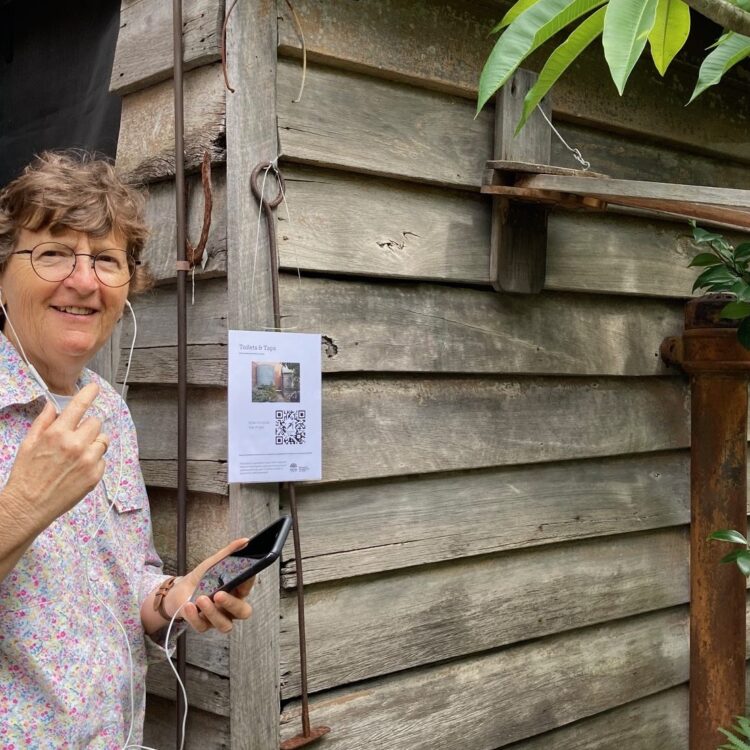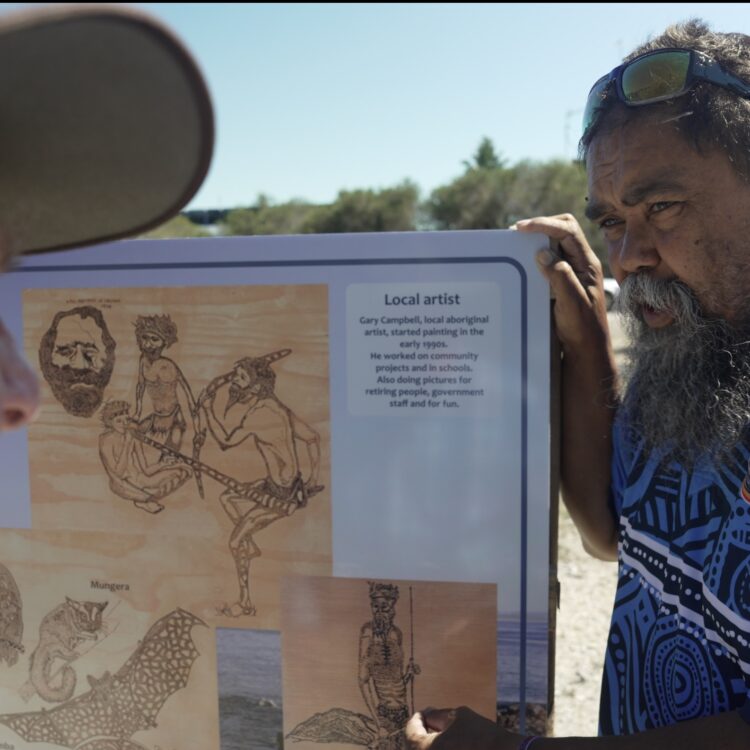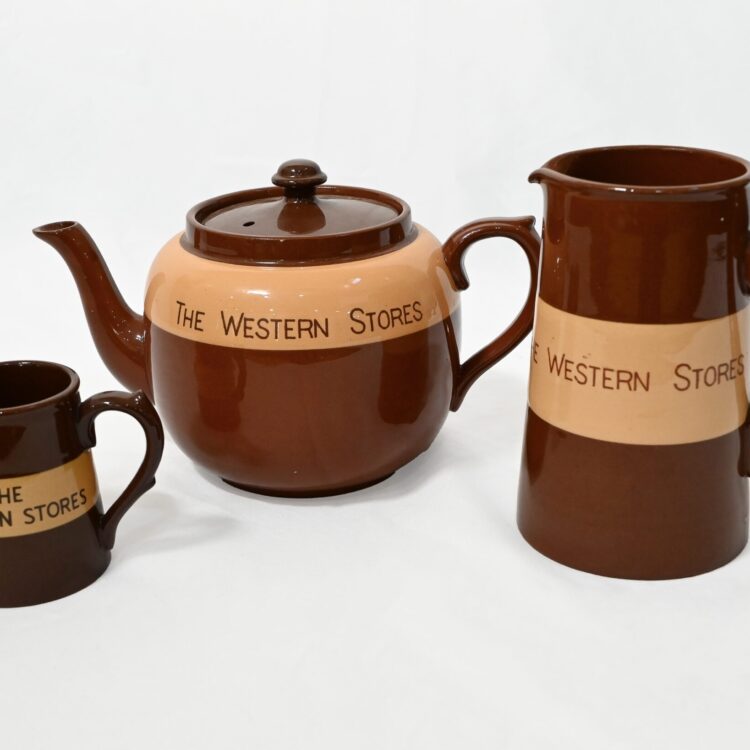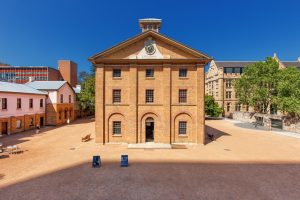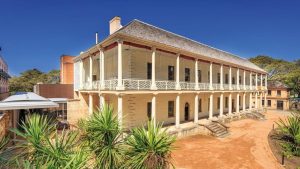On 21 February the Hyde Park Barracks re-opened to the public after a yearlong closure, unveiling a new immersive audio guide experience. The new personalised storytelling experience is data-driven, tracking visitors as they move around the site and using their location to deliver custom audio directly to their headsets as well as activating animated vignettes.
This state-of-the-art interpretation project was delivered in partnership with Local Projects, an experience design studio based in New York, best known for their work on the 9/11 Memorial Museum and the Cooper Hewitt Smithsonian Design Museum.
Commissioned in 1817 by Governor Lachlan Macquarie, the Barracks was designed by convict architect Francis Greenway. Originally built to house convicts, the site has also served as an immigration depot, asylum, law courts and government offices.
Sydney Living Museums set out to create an emotion-led learning experience that tells of Australia’s convict story and the site’s early role in immigration and institutional care. The impact of the site on Aboriginal land, culture and communities are also acknowledged and told.
At the core of the new experience is the significant archaeological collection. More than 4,000 original objects are on display, many for the very first time. The collection of items worn, touched and treasured by past residents is considered one of the best-preserved examples of 19th-century institutional life anywhere in the world.
What makes this responsive heritage interpretation unique is that is built using a customised content management system that enables the team to make immediate improvements and refinements overtime to ensure the experience is delivering the best narrative possible. It is also capable of being authored to deliver multiple languages and accessible experiences, including audio for visually impaired users and an iPad version with descriptive text for visitors who are deaf or hard of hearing.

